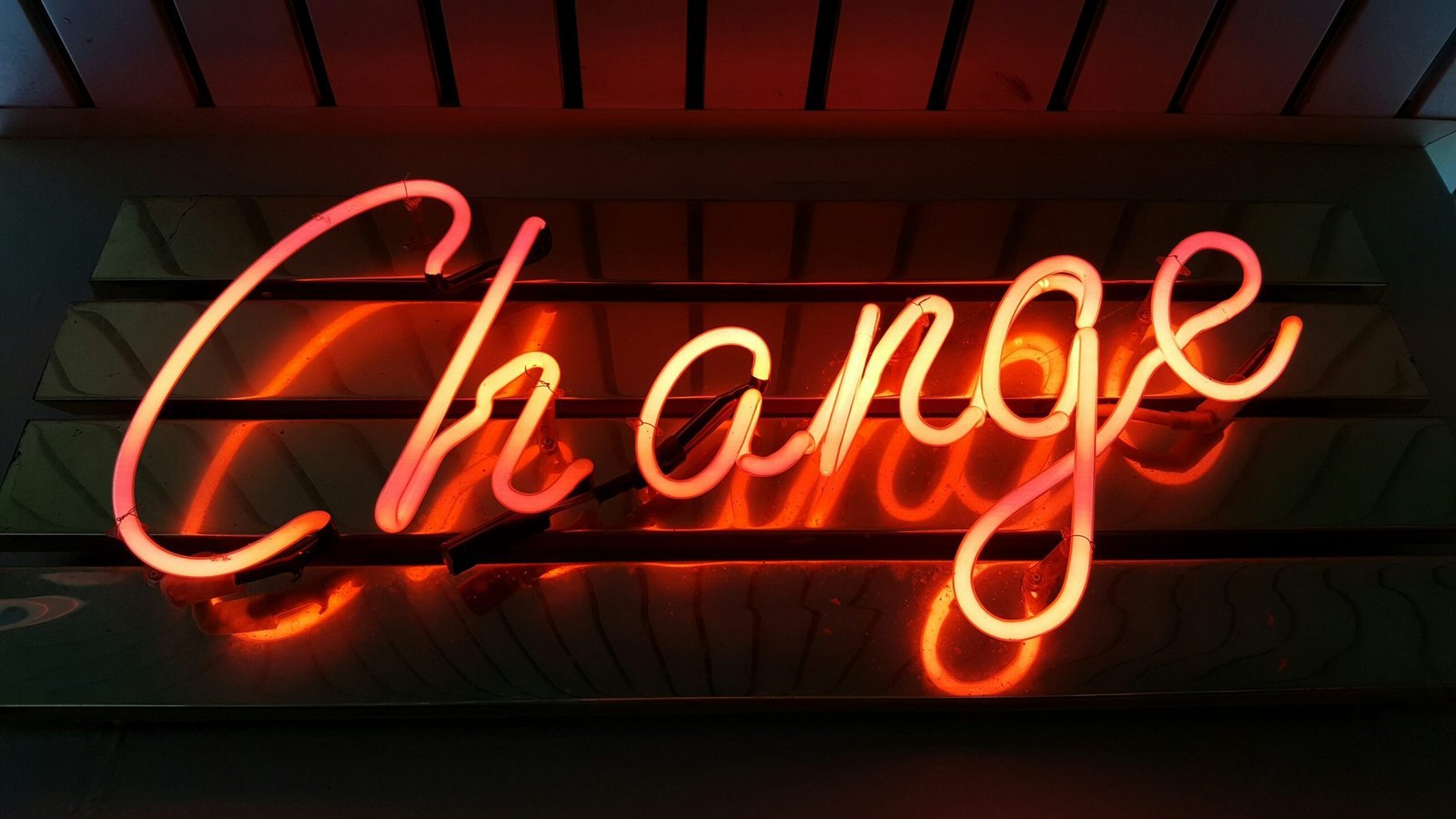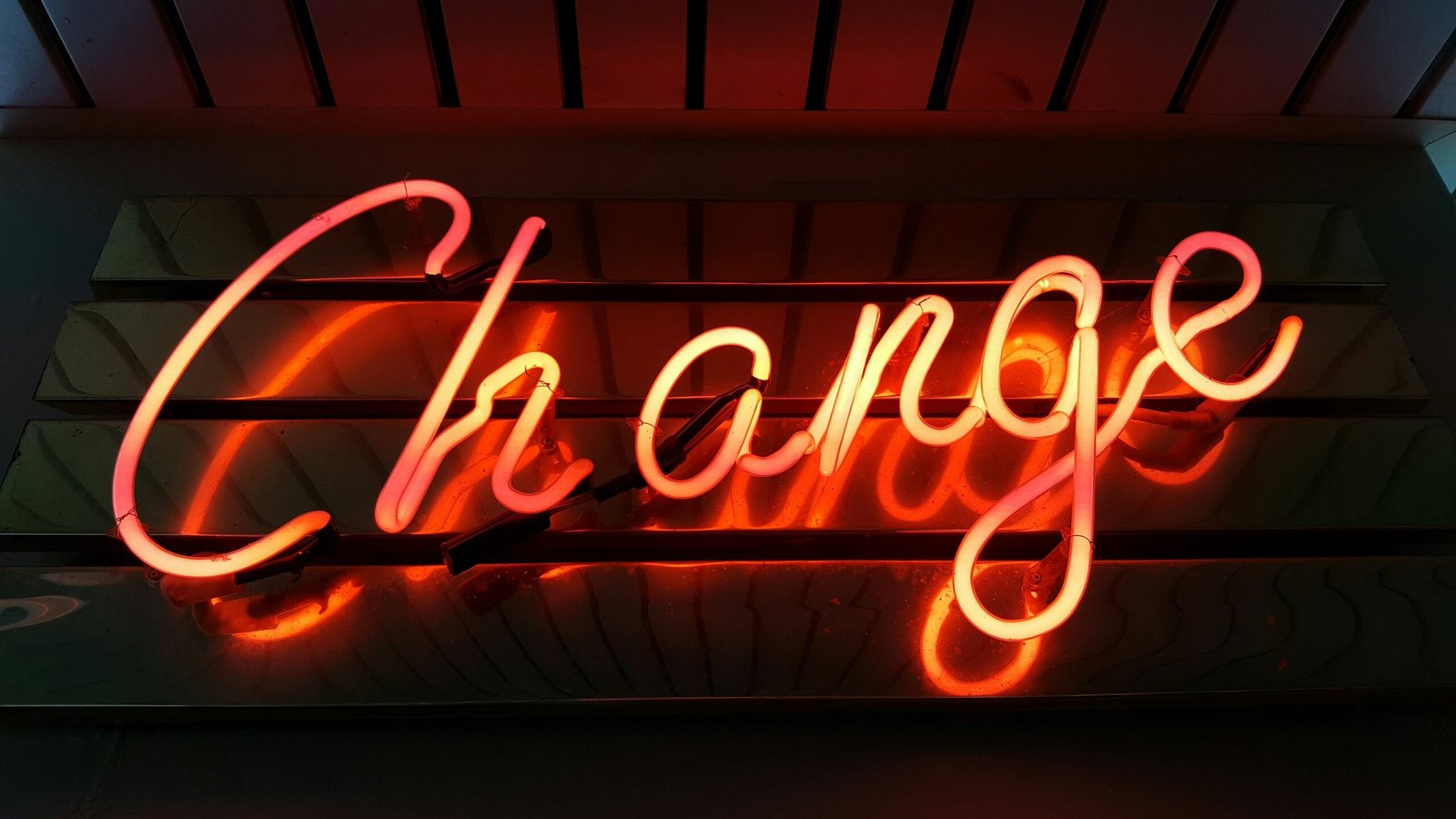
The Importance of Social Change
Social change refers to the significant alterations over time in behavior patterns and cultural values and norms. This concept serves as a foundational pillar for social progress, affecting every aspect of society, from economic structures to cultural beliefs. In contemporary society, the drive for social change is more relevant than ever, as various movements demand equity, justice, and inclusivity. Particularly in 2025, the necessity for active engagement and dialogue in the pursuit of social change cannot be overstated. During this pivotal year, political climates, technological advancements, and demographic shifts present both opportunities and challenges that require collective action and open discourse.
In recent years, we have observed how the mobilization of communities can lead to significant strides in establishing rights and addressing social injustices. The meteoric rise of social media has facilitated worldwide connectivity and information sharing, empowering individuals and groups to advocate for change more effectively. This digital platform echoes the significance of communication and participation in fostering awareness and galvanizing support for various causes. Nevertheless, engagement must manifest not just as passive acknowledgment but as active involvement in dialogues and initiatives that aim to drive change.
However, silence poses a perilous threat to social movements. A lack of discourse can allow unjust systems to persist unchallenged, undermining the fighting spirit for equality and fairness. By neglecting to voice concerns or share experiences, individuals contribute to the systematic quelling of progress. In exploring the dynamics of sound versus silence in the context of social change, one can gain a deeper understanding of how crucial these elements are in shaping the course of societal evolution in 2025. The role of silence in social movements cannot be underestimated, as it may ultimately derail efforts aimed at creating a just and equitable society.
Understanding Silence in the Context of Activism
Silence can possess profound implications in the realm of social activism. It operates on various dimensions, greatly influencing the dynamics of societal movements. To delve into this complexity, we categorize silence into two primary forms: passive silence and active silence. Passive silence refers to the absence of voice or action in the face of injustice. This type of silence often emerges when individuals or groups observe social wrongdoings, yet choose not to vocalize their concerns or stand in solidarity. Such inaction can lead to the perpetuation of societal inequalities, as it conveys a lack of support or opposition to systemic issues.
In contrast, active silence involves a conscious decision not to engage in public discourse. Activists may choose to remain silent for various reasons, including strategic considerations or a desire to avoid destructive conflict. For instance, some advocates might argue that remaining quiet in the presence of overwhelming opposition allows for critical reflection and the cultivation of more effective strategies. However, the implications of both passive and active silence can be detrimental. When advocating for change, the community’s collective silence risks overshadowing marginalized voices and stifling vital discussions necessary for progress.
Moreover, the dynamics of social media have exacerbated the dilemmas associated with silence. In the digital age, numerous movements rely on vocal presence to gain momentum. The absence of vocal support can be interpreted as complicity, undermining the credibility of the movement. Thus, understanding the nuances of silence is essential for activists and communities alike. It encourages reflection on the responsibilities that come with advocacy and the potential outcomes of both speaking out and choosing silence in the pursuit of social change.
Historical Examples of Silence Impacting Change
Throughout history, silence has played a pivotal role in shaping social dynamics, often leading to stagnation or regression in movements aimed at progress. One significant example can be traced back to the women’s suffrage movement in the early 20th century. Many women and even some male allies were compelled to remain silent due to societal pressures and norms that deemed their advocacy inappropriate or unwelcome. This silence not only delayed the right to vote for women but also hampered discussions around gender equality, significantly prolonging the struggle for women’s rights across generations.
Another critical instance is the response to the HIV/AIDS epidemic in the 1980s and 1990s. The silence from governmental bodies and the media at that time contributed to a lack of urgency and resources allocated to combatting the disease. Many lives were lost as a result of the stigma surrounding the illness, allowing misinformation to fester and communities to suffer. Activist groups, often silenced by society’s reaction, eventually had to fight not only for recognition of the disease but also against the oppressive silence that surrounded it. The eventual mobilization in response demonstrated how breaking that silence could lead to significant advancements in healthcare and public awareness.
The civil rights movement in the United States also showcases the consequences of silence. For years, systemic racism persisted with minimal opposition from the broader public. Many individuals chose silence over advocacy, allowing discriminatory practices to flourish unchecked. It was not until brave voices began to speak out that significant progress was achieved, culminating in landmark legislation that sought to address these injustices. The lessons from these historical instances highlight the profound impact silence can have on social change and underscore the necessity of open dialogue in fostering societal improvement.
The Role of Social Media in Amplifying Voices
In the contemporary landscape, social media has emerged as a formidable platform for individuals and groups advocating for social change. Through various channels, these platforms facilitate the expression of diverse perspectives and experiences, often giving rise to movements that address pressing social issues. From Twitter hashtags that unite activists to Instagram campaigns that share personal stories, social media functions as a megaphone for voices that might otherwise remain unheard in traditional discourse.
However, the role of social media is not solely beneficial. One of the paradoxes of this digital age is that while it democratizes the dissemination of information, it also creates an environment where significant voices can easily be eclipsed. The sheer volume of content generated daily often results in important discussions being lost amidst the noise. This overwhelming influx of posts and tweets can dilute impactful narratives, leading to a phenomenon where the most vital issues struggle to gain traction, overshadowed by less substantive content.
This balancing act poses a significant challenge for advocates of social change. On one hand, social media serves as a critical battleground for dialogue and awareness; on the other, it risks fostering an atmosphere of silence on key issues if not properly managed. Engaging in online discourse requires a strategic approach that emphasizes the importance of highlighting meaningful conversations while minimizing distractions. By curating content and fostering communities that promote critical dialogue, users can help ensure that pivotal voices resonate and contribute meaningfully to the broader narrative.
In essence, while social media has the potential to amplify voices in the fight for social change, it also necessitates a careful approach to maintain the integrity and visibility of significant discussions. The challenge lies in navigating this duality, harnessing the strengths of social platforms while addressing the barriers they present.
The Consequences of Silence on Marginalized Communities
Silence can wield considerable power, often impacting marginalized communities in devastating ways. When these groups are silenced, whether intentionally or through systemic indifference, the repercussions can be profound and multifaceted. This silence not only perpetuates existing inequalities but also hinders social progress, maintaining the status quo that favors more privileged demographics. In 2025, as society grapples with pressing social change, the need to amplify the voices of the marginalized has never been more urgent.
One significant consequence of silence is the invisibility of important issues that affect marginalized groups. When their voices are not heard in public discourse, essential matters such as racial injustice, gender inequality, and economic disparity remain unaddressed. This lack of representation in discussions—whether it be in media, politics, or community forums—leads to policies and practices that do not consider the needs or perspectives of these communities. Consequently, systemic issues are not rectified, leading to further disenfranchisement.
Moreover, the silence surrounding marginalized communities can exacerbate feelings of isolation and hopelessness among their members. When individuals feel their struggles are ignored or trivialized, they may become less likely to advocate for themselves or participate in societal dialogues. This lack of engagement can perpetuate a cycle of silence and oppression, diminishing the opportunity for grassroots movements that seek to drive meaningful change.
In 2025, it is essential to prioritize the elevation of marginalized voices as a counter to this silence. By encouraging open dialogue and fostering platforms where these communities can be heard, society can begin to dismantle the barriers that have perpetuated their struggles. Engaging with and listening to these perspectives is not merely a moral imperative; it is a catalyst for innovative solutions and comprehensive societal change.
Silence as a Tactic: Strategic Omissions in Advocacy
In the realm of advocacy and activism, silence can serve as a powerful tactic, often employed strategically to enhance the overall impact of a movement. The deliberate omission of certain voices or topics may be utilized to maintain focus on core objectives, thus amplifying the call for change. For instance, during civil rights movements, activists sometimes chose to distance themselves from more radical factions to ensure broader public support. By strategically omitting contentious elements, advocates were able to create a united front that resonated with a wider audience.
This method, however, carries inherent complexities and risks. Temporarily sidelining specific issues or marginalized voices can lead to an incomplete narrative that fails to encompass the diverse experiences of all affected groups. The effectiveness of such tactical silence often hinges on context. In some cases, it may foster greater visibility for essential issues; in others, it risks alienating those whose struggles are overlooked. For instance, movements addressing racial equality must navigate the delicate balance between collective solidarity and the need to highlight intersectional challenges faced by various communities.
The dynamics of silence in advocacy also manifest in the digital age. Campaigns on social media platforms can leverage periods of silence to build anticipation or to facilitate introspection among followers. Movements often implement ‘quiet periods’ to encourage their members to reflect on the issues at hand, ultimately galvanizing support. However, this tactic requires careful consideration of when and how to utilize silence, as it may be perceived as neglect or avoidance of pressing concerns if not executed judiciously.
In conclusion, while silence can serve as a strategic tool in advocacy, it is crucial to understand the potential consequences of such omissions. The delicate interplay of voice and silence shapes the advocacy landscape, necessitating a thoughtful approach to ensure that all narratives are effectively addressed. Balancing the tactical use of silence with the need for inclusive representation remains a significant challenge for activists striving for social change.
Overcoming Silence: Strategies for Engagement
Combatting the silence that often permeates social movements is crucial for fostering meaningful engagement within communities. By implementing effective strategies, individuals can empower themselves and others to break through barriers, facilitating critical discussions that lead to social change. One of the most effective ways to combat silence is to actively foster conversations around pressing social issues. This can be achieved through workshops, community meetings, and forums that encourage open dialogue. Such platforms allow individuals to share experiences and perspectives, thereby generating a collective understanding of the issues at hand.
Encouraging dialogue among diverse groups is another vital strategy. Engaging with various community members—regardless of their backgrounds or beliefs—ensures a broader representation of voices. This not only helps to minimize the risk of silencing minority perspectives but also enriches the conversation, ultimately leading to comprehensive solutions to social problems. Creating specifically structured dialogues, such as fishbowl discussions or roundtable settings, can be particularly effective in promoting inclusive interaction.
Additionally, leveraging technology can play a transformative role in overcoming silence. Social media platforms and online forums provide ample opportunities for individuals to vocalize their opinions and concerns. By promoting hashtags or campaigns that invite dialogue, social movements can amplify their reach and attract attention to critical issues. Simultaneously, utilizing podcasts and virtual town halls can further enhance community engagement, making it easier for those who may face barriers to participate actively.
Lastly, it is essential to cultivate an environment where individuals feel safe and encouraged to express their thoughts. This can be achieved by establishing guidelines for respectful dialogue, providing support resources, and promoting active listening. Through these strategies, communities can work together to dismantle silence and ensure that every voice is heard, ultimately paving the way for effective social change.
Case Studies of Successful Social Movements in 2025
In 2025, various social movements have emerged, illustrating the tremendous impact of collective action in overcoming the challenges posed by silence in societal discourse. One prominent example is the “Voices of Tomorrow” campaign, which focused on environmental justice. This movement mobilized thousands of individuals concerned about climate change and resource depletion, using a mix of grassroots organizing and digital platforms to amplify marginalized voices that had previously been silenced. The campaign successfully lobbied for policy changes that prioritized clean energy initiatives in urban communities, showcasing the strength of united voices in effecting policy change.
Another illustrative case study is the “Equality Now” movement, which emerged to address systemic inequalities and promote gender equity. This movement utilized social media to combat silence surrounding issues such as domestic violence and workplace discrimination. By sharing personal stories and creating online petitions, the activists were able to inspire a global conversation about gender rights. This collective effort influenced legislative reforms in multiple countries, signaling that amplifying voices can shatter the silence surrounding social injustices.
Additionally, the “Healthcare Access for All” initiative represented a collaboration between various health advocacy groups and affected communities. This movement confronted the silence surrounding health disparities, particularly in underserved populations. By organizing town hall meetings and awareness campaigns, they brought attention to healthcare inequities and mobilized public support for expanded healthcare access. The success of this initiative in persuading governmental agencies to allocate resources to marginalized communities illustrates how focused collective action can address critical societal issues.
These case studies from 2025 demonstrate that despite the challenges posed by silence, effective social movements can harness collective action and advocacy to drive significant change. Through innovative tactics and a commitment to amplifying voices, these movements have shown that a concerted effort can profoundly impact society, fostering an environment where diverse perspectives are not just heard but actively valued.
Conclusion: The Call to Action Against Silence
Throughout this discussion, we have explored the profound implications of silence in the context of social change, particularly as we approach the transformative landscape of 2025. Silence has the power to stifle progress, to allow injustices to persist unchecked, and to mute the vital dialogues necessary for societal advancement. When individuals choose to remain silent, they inadvertently contribute to the perpetuation of the status quo, which can hinder efforts aimed at bringing about meaningful reform.
It is imperative for each of us to acknowledge that our voices hold significant power. In times of social unrest and upheaval, speaking out becomes not just a choice, but a responsibility. Every person has the ability to influence change—whether it’s through raising awareness, engaging in grassroots movements, or communicating with policymakers. The aggregative impact of many voices can amplify the call for justice and equality, serving to dismantle the barriers that silence attempts to impose.
As we look towards the future, it is essential for individuals and communities alike to cultivate a culture of open communication. This culture should encourage dialogue, foster understanding, and spur collective action. Inaction in the face of injustice can be just as detrimental as voicing oppressive silence. Each citizen must recognize their role in advocating for social progress and harness opportunities to participate in crucial conversations. By leveraging our collective voices, we can challenge the forces that seek to undermine change.
As we move forward into 2025, let us not underestimate the power of our voices. The call to action against silence is not merely a challenge but an invitation to engage actively in shaping our world. We must ensure that silence does not become our legacy, but rather our commitment to champion the causes that matter most to us and to our communities. The time for action is now.


